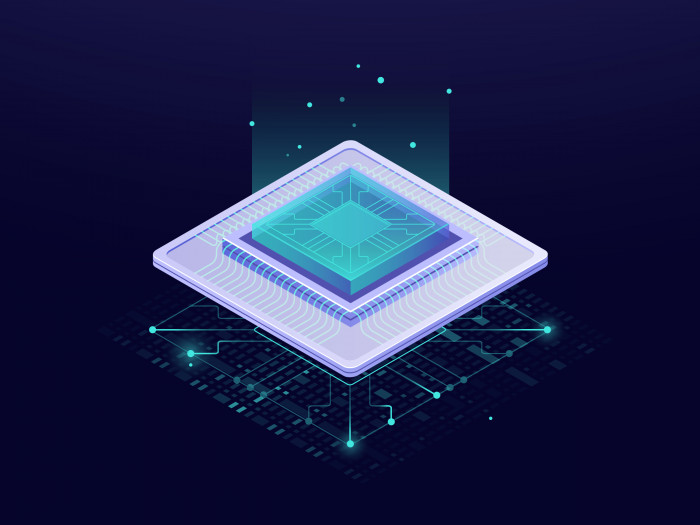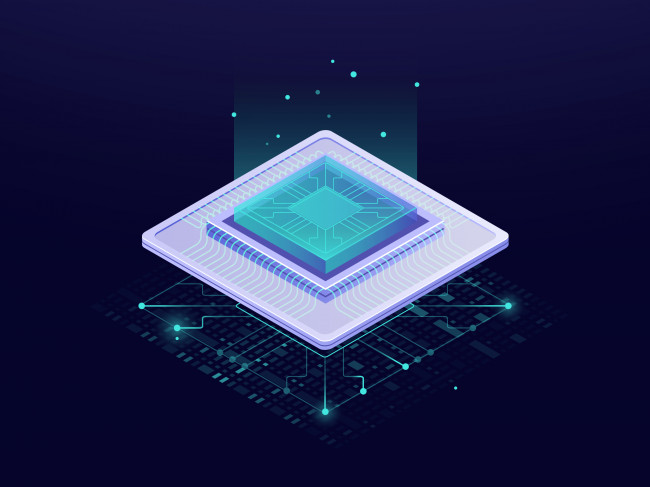As businesses increasingly look to adopt deep learning technologies, it's crucial to understand how to get the most out of your GPUs. In this blog post, we'll explore how to maximize deep learning performance with GPUs. We'll cover topics like tuning your hyperparameters and using data parallelism. By following these tips, you'll be able to get the most out of your deep learning models.

Why GPUs are Important for Deep Learning Performance
GPUs (Graphics Processing Units) are becoming increasingly important in the field of deep learning due to their ability to rapidly process vast amounts of data. GPU processors offer an advantageous alternative to typical CPU processors, which are not as capable for large operations that require significant parallel processing such as deep learning applications.
GPUs also allow for easier access to high performance GPU-equipped remote servers by leveraging cloud GPU technology. Cloud GPU usage allows for developers to optimize and speed up the innovative development cycle without having to invest in dedicated hardware or pay for extra power consumption. GPUs are therefore paramount when expanding access and improving performance of deep learning tasks.
- GPUs are essential for deep learning tasks due to their ability to quickly process large amounts of data in parallel.
- GPU processors offer more efficient and faster performance than traditional CPU processors, making them ideal for deep learning applications.
- Leveraging cloud GPU technology allows developers to access high-performance remote servers without the need to
How to Select the Right GPU for Your Needs
If you are looking for a GPU to fit your needs, Nvidia has several options that can help. For deep learning, Nvidia's A100 GPU provides the best performance and features. In addition to traditional GPUs, Nvidia also offers cloud GPU solutions, allowing users to access their GPUs remotely through the cloud.
If a cloud-based solution is not right for you, Nvidia has a wide range of other powerful GPU solutions including the A30 GPU. It is important to consider which type of GPU is right for your needs and budget before committing to one; you want one that will allow you access the features and capabilities you need without breaking the bank.
NVIDIA A100 tensor core GPU is a powerful GPU used for deep learning tasks. It has lots of features and capabilities to help you with your project.
NVIDIA A30 is also a good choice for deep learning, but it does not have as many features as the A100. Both GPUs are good choices because they let you do more things faster and save money too.
The Benefits of Using a GPU for Deep Learning
GPU computing has become one of the central foundations of Artificial Intelligence, especially in the area of deep learning. GPUs offer powerful computations and superior graphics acceleration which optimize AI tools and enable projects with high computational requirements.
GPU clouds further streamline access to GPU compute power making GPU capabilities more accessible and shareable across enterprise teams as well as independent developers. GPU clouds increase scalability allowing successful projects to progress faster than ever before and also cost-effectively scale up or down according to fluctuating project needs. The benefits of GPU computing and GPU clouds for deep learning are numerous: quicker development, increased performance, enhanced efficiency, and improved cost control.
Tips for Getting the Most Out of Your GPU Investment
Investing in Deep Learning GPUs is a great way to take your machine learning workloads to the next level. To get the most out of your GPU investment, it is important to understand the capabilities and limitations of your Deep Learning setup. Make sure you choose an appropriate GPU for your compute needs - and that you are using the most up-to-date software and libraries.
Your Deep Learning GPU may also be limited by memory bandwidth and storage bottleneck issues, so look into optimizing these parts of your setup as well. Finally, investing in multiple GPUs can help with scaling out Deep Learning networks - allowing you to run them concurrently or uptime in parallel.
Case Studies of Companies Using GPU for Deep Learning
One of the major companies using GPU for deep learning is Google. Google has been leveraging GPUs to power its various machine learning applications, including those used in its search engine algorithm and Google Photos.
Google's decision to use NVIDIA Tesla K80 GPUs for its machine learning workloads has been a strategic move that has allowed the company to maximize the efficiency of its deep learning projects. By leveraging the capabilities of NVIDIA Tesla K80 GPUs, Google is able to process large amounts of data in parallel at extremely fast speeds.
This helps speed up the process of deep learning significantly.
GPUs provide greater computational power than CPUs, allowing for faster training and inference tasks. This is due to the fact that GPUs contain thousands more cores than CPUs, which can be used in parallel to reduce training and inference times.
Furthermore, by using a GPU cloud service, users are able to dramatically increase the scalability of their deep learning projects. It allows for multiple GPUs to be used concurrently or in parallel, which can drastically reduce training and inference times for large datasets.
GPU computing and GPU clouds allow users to reap the benefits of deep learning without the high-cost hardware investments typically associated with traditional computing methods. In addition to eliminating the need for costly hardware maintenance or upgrades, GPU clouds also provide greater scalability and flexibility than their traditional counterparts.
Conclusion
GPUs are an indispensable tool for anyone exploring the world of deep learning. They provide the performance that is necessary for taking full advantage of modern machine learning algorithms and surpassing them within budgets. Fortunately, there are a range of GPU models that one can choose from to meet their individual performance needs both economically, and with specific features. With the above tips in mind, anyone should be able to select a device that fits all the criteria for their deep learning projects.
Additionally, among other providers Ace Cloud GPU stands out as the best offering for individuals looking for outstanding performance and economical pricing packages. We urge you to start your journey here and explore more of what they have on offer!













